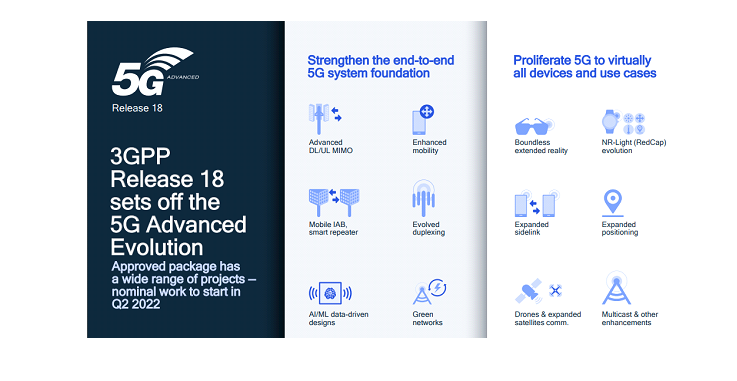

Arunesh K T
Representing ACL Digital at Big 5G Event – My Insights and Future of 5G
I recently had the incredible opportunity to attend the highly anticipated Big 5G Event in the vibrant city of Austin, Texas. This event is the foremost assembly of industry leaders and esteemed experts, offering a gateway to invaluable insights, networking opportunities, and exploration of the latest advancements within the dynamic 5G ecosystem.
I attended most of the sessions/keynotes from the leaders of leading CSP, 5G solution providers, and analyst firms. I was delighted by the thought process these leaders bring to the 5G innovation.
During discussions with industry leaders, I gained valuable insight regarding the full potential of 5G: telco operators must embrace a multi-vendor strategy to harness its benefits. This approach entails procuring equipment from various vendors rather than relying on a single one. However, this strategy presents challenges, such as managing a heterogeneous network and ensuring compatibility among different equipment. As a solution provider or solution engineering provider, it is crucial to avoid isolation and seize opportunities for diversified innovation. Proactive engagement through event participation, joint proofs-of-concept, and communities is essential for sharing ideas, expertise, and thoughts. To contribute effectively to 5G innovation, it is imperative to continually enhance offerings, acquire new skills, and foster improvement within one’s capabilities.
Here are some of the critical topics that have been discussed in various sessions.
IEEE Testbed-as-a-Service
A discussion occurred regarding the potential of the IEEE 5G/6G Innovation Testbed as a collaborative platform to provide Testbed-As-a-Service, making it accessible to academics, industry professionals, startups, vendors, operators, and governments worldwide. IEES aims to address the digital divide by building the 5G/6G Innovation Open Source Testbed, which aims to offer global access for developing proof-of-concept and validating use cases across diverse verticals.
Open RAN
CSPs are approaching Open RAN with their deployment of radio access space, specifically in rural areas, and benchmarking this performance to evaluate their readiness for “prime time.” One of the essential parts of Open RAN architecture, which will play a significant role in advancing the utilization of available radio platforms, is the usage of RIC and xApps/rApps. It has been identified that innovation is supposed to come at RIC and xApps/rApps in Open RAN 5G network.
In upcoming years, exciting times will come around these intelligent parts of Open RAN.. These will foster enhanced flexibility, agility, and innovation within the RAN ecosystem. These components enable operators to tailor their networks to their unique requirements, making the RAN more programmable. This increased programmability can result in improved performance, reduced costs, and the introduction of novel services, amplifying the potential benefits of Open RAN.
Open RAN’s impact on energy usage is an important aspect to consider. As the adoption of Open RAN is expected to occur gradually over multiple years, it is necessary to gather additional data to assess its specific effects.
TIP and the O-RAN Alliance are crucial in advancing Open RAN evolution. TIP focuses on broader telecom infrastructure solutions, while the O-RAN Alliance specifically targets RAN architectures and interfaces. Their combined efforts contribute to developing, standardizing, and adopting open and interoperable RAN technologies.
3GPP Release 18 as 5G Advanced
Art Maria from AT&T delivered an insightful presentation that centered around the advanced features and capabilities of 5G, emerging use cases, service opportunities, the role of satellite connectivity, and the utilization of AI for enhanced efficiency and energy savings. The presented content showcased the upcoming advancements of 5G technology and its potential to deliver diverse use cases.
Explicitly talking about AI integration in 5G – 3GPP release 18 introduces significant improvements in artificial intelligence (AI) and extended reality (XR), enabling brilliant network solutions that can cater to a broader range of use cases than ever before. Rel-18 aims to incorporate machine learning techniques at various network levels, bringing further intelligence to wireless networks. It might be ready for implementation and deployment around 2025.

Source: Setting off the 5G Advanced evolution, Qualcomm
Rel-18 encompasses over 22 new or enhanced technologies, features, and capabilities for Radio Access Networks (RAN). It includes enhancements in areas such as MIMO evolution, AI/ML for the air interface, NR duplex evolution, sidelink, improved positioning, RedCap support, energy efficiency, Smart repeater support, new spectrum utilization, Dynamic Spectrum Sharing, non-terrestrial networks, UAV support, and extended reality.
Telco Cloud
Telco cloud empowers operators to shift from conventional, hardware-centric infrastructure to dynamic, software-based network architecture. Telco operators have increasingly embraced using the telco cloud to accommodate network functions and essential workloads.
Over the past few years, leading hyper-scale providers such as AWS, Google Cloud Platform (GCP), and Microsoft Azure have actively engaged in the realm of 5G by introducing targeted solutions for hosting telecom workloads. These solutions encompass hosting workloads in central cloud environments and at the network edges. The Big 5G event has sparked discussions surrounding the adoption of telco cloud by tier 1 telco operators.
6G Evolution
During the presentations and some of my discussions with leaders, they highlighted that they would name the next generation of commercial wireless communications as 6G.
. The 3GPP standards body has announced the initiation of 6G with the implementation of the Release 20 standard in the coming years. However, apart from this, there is limited information available about 6G.
Various ideas were presented regarding the potential characteristics of 6G throughout the sessions. These ranged from an evolutionary progression of the existing 5G standard to revolutionary capabilities that would enable the utilization of artificial intelligence (AI) for optimizing network operations and desired applications.
Nevertheless, there are numerous challenges associated with 6G. One primary challenge is the identification of the radio frequencies transmitting data. Andrew Thiessen, the chair of the Spectrum Working Group for the Next G Alliance, mentioned identifying spectrum for 6G in the U.S. is proving to be a challenging.
During his keynote speech, Mike Nawrocki from Next G Alliance emphasized the importance of 6G innovation. He highlighted the shift from focusing solely on providing quality service to enhancing the overall quality of life. He discussed the significance of industry collaboration and partnerships in developing solutions that positively impact societies, transforming how we live, learn, and work while striving for a sustainable future.
Nawrocki also highlighted specific examples of how 6G can change our lives. These include advancements such as home-based patient care, autonomous and remote driving, immersive learning and gaming experiences, and the concept of mission-connected ambulances. These innovations can revolutionize various aspects of our daily lives, offering improved experiences and opportunities.
Sustainable 5G and upcoming 6G
The integration of sustainability has become an essential aspect of network design and implementation for telecom operators. It is an essential issue for the telecom sector, with topics like emissions and waste reduction coming up frequently.
Bhushan Joshi, head of sustainability and corporate responsibility at Ericsson, who chairs NGA’s Green G working group, spoke of the importance of establishing KPIs to make 6G sustainable by design.
Chad Wilkinson from T-Mobile delivered a presentation utilizing, highlighting the advantages of using environmentally friendly equipment. Additionally, he shared the achievements T-Mobile has experienced with its network over the past two years.
Summary
The Big 5G events provided a valuable blend of present and future-oriented insights and best practices in the telecommunications industry. Evidently, that there is substantial potential for further growth in the realm of 5G. We have now embarked on the journey towards 6G. ,With the introduction of new 3GPP releases, I anticipate the emergence of compelling enterprise and consumer use cases and applications in the latter part of this year and early 2024, mainly as operators roll out 5G Standalone deployments.




